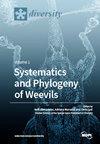牛克氏肌囊虫和牦牛肉糜囊虫形态难以区分的肌囊虫的流行及遗传特征
IF 2.1
3区 生物学
Q2 BIODIVERSITY CONSERVATION
引用次数: 0
摘要
牛(Bos taurus)的克氏肌囊虫和牦牛(Bos grunniens)的肉食性肌囊虫在形态上难以区分。然而,这两种寄生虫之间的关系尚不清楚。本文对从中国屠宰场采集的两种家畜的肌肉组织进行了克氏s.g rzi和棘棘s.p ephagicanis的肌囊检查。用光镜(LM)、透射电镜(TEM)和DNA分析对从样品中分离的肌囊进行分析。950头牛中有405头(42.6%)、320头牦牛中有304头(95.0%)检出克氏链球菌和棘球绦虫的囊泡。LM和TEM显示两种寄生虫的肌囊具有相似的形态特征。薄壁结节囊肿表面有毛发状突起。超微结构显示原发囊肿壁包含不规则折叠、多毛或骨样突起。对两种寄生虫的18S rDNA、28S rDNA、线粒体cox1和顶质体rpl6 4个遗传标记进行测序和分析。4个位点序列的种间相似性分别为97.9% ~ 98.6%、97.2 ~ 98.1%、89.5 ~ 90.4%和96.9 ~ 97.2%。利用28S rDNA和cox1序列进行系统发育分析表明,克氏链球菌和棘球绦虫均属于反刍动物中肌囊虫属,已知或推定的最终宿主为犬科动物。克氏肌囊虫和棘球绦虫为独立种,cox1和rpl6可用于区分二者。本文章由计算机程序翻译,如有差异,请以英文原文为准。
Prevalence and Genetic Characterization of Morphologically Indistinguishable Sarcocysts of Sarcocystis cruzi in Cattle and Sarcocystis poephagicanis in Yaks
Sarcocystis cruzi in cattle (Bos taurus) and Sarcocystis poephagicanis in yaks (Bos grunniens) are morphologically indistinguishable. However, the relationship between the two parasites is still unclear. Here, muscular tissues of the two species of domestic animal collected from abattoirs in China were examined for sarcocysts of S. cruzi and S. poephagicanis. The sarcocysts isolated from the samples were analyzed using light microscopy (LM), transmission electron microscopy (TEM), and DNA analysis. Sarcocysts of S. cruzi and S. poephagicanis were found in 405 of 950 (42.6%) cattle and 304 of 320 (95.0%) yaks. LM and TEM showed that the sarcocysts of the two parasites had similar morphological characteristics. The thin-walled sarcocysts had hair-like protrusions on the surface. The ultrastructures were demonstrated to include a primary cyst wall containing irregularly folded, hirsute, or bone-like protrusions. Four genetic markers of the two parasites were sequenced and analyzed, namely, 18S rDNA, 28S rDNA, mitochondrial cox1, and apicoplast rpl6. The sequences of the four loci had an interspecific similarity of 97.9–98.6%, 97.2–98.1%, 89.5–90.4%, and 96.9–97.2% identity, respectively. Phylogenetic analysis using 28S rDNA and cox1 sequences indicated that both S. cruzi and S. poephagicanis were placed into a group encompassing Sarcocystis spp. in ruminants with canid as known or putative definitive hosts. Sarcocystis cruzi and S. poephagicanis represent separate species, and cox1 and rpl6 were suitable for distinguishing between them.
求助全文
通过发布文献求助,成功后即可免费获取论文全文。
去求助
来源期刊

Diversity-Basel
Environmental Science-Ecological Modeling
CiteScore
3.40
自引率
12.50%
发文量
925
审稿时长
11 weeks
期刊介绍:
Diversity (ISSN 1424-2818) is an international and interdisciplinary journal of science concerning diversity concept and application, diversity assessment and diversity preservation. It is focused on organismic and molecular diversity. It publishes reviews, regular research papers and short notes in the regular issues. Related news and announcements are also published. Our aim is to encourage scientists to publish their experimental and theoretical results in as much detail as possible. Therefore, there is no restriction on the length of the papers. Full experimental details must be provided so that the results can be reproduced.
 求助内容:
求助内容: 应助结果提醒方式:
应助结果提醒方式:


